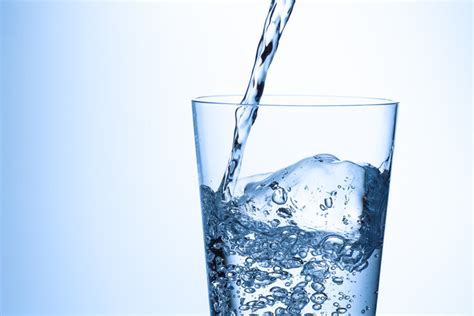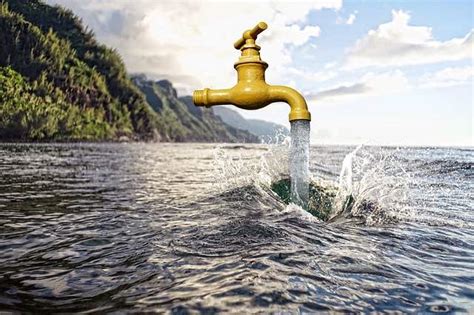Water is an essential component of the cells of living organisms, including humans.
Although not categorised as a nutrient, water plays a vital role in all of the body’s biochemical processes, as Herbert Shelton explains in Natural Hygiene: Man’s Pristine Way of Life,
“Indeed, all the chemico-vital processes or changes that take place in the living body require the presence of water and a deficiency of it soon manifests itself in disturbances of these operations.”
Water is lost from the body through natural functions, such as excretion and sweating, and therefore needs to be replaced to avoid dehydration, which can have serious health consequences. Although it is essential that lost fluids are replaced, there are differing opinions about the quantity of water that should be consumed each day; this important topic is discussed in chapter ten of our book, What Really Makes You Ill? Why Everything You Thought You Knew About Disease Is Wrong. It is the quality of drinking-water that is the focus of this discussion.
The importance of providing good quality water for all purposes is recognised by the February 2018 WHO fact sheet entitled Drinking-water that states,
“Safe and readily available water is important for public health, whether it is used for drinking, domestic use, food production or recreational purposes.”
According to the USGS (US Geological Society) web page entitled How Much Water is There on Earth? an estimated 71 per cent of the Earth’s surface is covered by water, of which approximately 96.5 per cent is sea-water. Of the remaining 3.5 per cent that is fresh water, more than two-thirds is locked in ice, glaciers and permanent snow. This means that only about 1 per cent of the total volume of water on the planet is in the form of liquid freshwater, most of which is located in groundwater and therefore below the surface; this leaves only a comparatively tiny volume located in surface waters, such as rivers and lakes. Yet this precious resource in all its locations has been, and continues to be, ‘poisoned’.
It must be noted that the deliberate poisoning of water with intent to cause harm forms no part of this discussion.
The WHO Guidelines for Drinking Water Quality report, originally published in 2011, was updated in 2017; this fourth edition of the report incorporates additional material, including the SDGs (Sustainable Development Goals) that relate to water. The UN 2030 Agenda and a number of the SDGs are discussed in greater detail in chapter eight of our book; it should be noted for the purposes of this discussion that SDG 6.1 aims to,
“By 2030, achieve universal and equitable access to safe and affordable drinking water for all.”
The WHO report, which will be referred to as the Water Guidelines report, states that,
“The primary goal of the Guidelines is to protect public health associated with drinking-water quality.”
It would seem from the stated objectives of the UN and WHO that their policies will ensure that water made available for human consumption will be safe. Unfortunately, the word ‘safe’ is used in the same context in these reports as it is used in the Codex Alimentarius food guidelines; in other words, ‘safe’ is a relative term, as demonstrated by the Water Guidelines report that states,
“Every effort should be made to achieve drinking water that is as safe as practicable.”
Efforts to make water ‘safe’ ought to involve the removal of all hazardous materials prior to the water being made available for human consumption. However, ‘as safe as practicable’ does not mean that all hazards have been removed; as the Water Guidelines report indicates, the purpose of the recommended strategies is to,
“…ensure the safety of drinking-water supplies through the control of hazardous constituents of water.”
Unfortunately, their rigid adherence to the ‘germ theory’ means that, according to the medical establishment, the main ‘hazardous constituents of water’ are microbes; as indicated by the report that refers to,
“microbial hazards, which continue to be the primary concern in both developing and developed countries.”
The main strategies to address these microbial hazards in order to make water ‘safe’ are discussed in more detail in chapter six of our book.
It is recognised that sanitation, hygiene and water are closely related issues; this is demonstrated by SDG 6.2, the aim of which is to,
“By 2030, achieve access to adequate and equitable sanitation and hygiene for all…”
It was shown in chapter two of our book that the introduction of sanitary measures played a significant role in achieving improved public health, although this is often erroneously attributed to vaccination programmes. It is clear that insanitary conditions can adversely affect water quality, but the WHO nevertheless promotes the erroneous idea that ‘germs’ are the major cause of health problems. The WHO web page entitled Water-related diseases lists a number of diseases claimed to be caused by ‘germs’ and transmissible through water; one of these diseases is cholera, which is discussed in chapter eight. Surprisingly, this list also includes malnutrition; the WHO claims the nature of the relationship between water and malnutrition to be that,
“Nutritional status is compromised where people are exposed to high levels of infection due to unsafe and insufficient water supply and inadequate sanitation.”
Unsafe water does not cause ‘infections’; however, inadequate sanitation measures can clearly lead to the contamination of water, which, if consumed, would certainly be detrimental to health. The real relationships between malnutrition, insanitary living conditions and illness are also discussed in chapter eight.
The erroneous belief that ‘microbes’ pose the main threat to water quality means that an inadequate level of attention is paid to the real sources of water pollution. Although the phrase ‘dangerous contaminants’ refers to ‘microbes’, nevertheless, the WHO Drinking-water fact sheet does refer to genuine contaminants in the statement that,
“Inadequate management of urban, industrial and agricultural wastewater means the drinking-water of hundreds of millions of people is dangerously contaminated or chemically polluted.”
The recognition that industrial wastes and chemicals are major sources of water pollution is demonstrated by the aim of SDG 6.3, which is to,
“By 2030, improve water quality by reducing pollution, eliminating dumping and minimizing release of hazardous chemicals and materials…”
Although the Water Guidelines report refers to the contamination of water by chemicals, it downplays their importance as pollutants in the statement that,
“There are many chemicals that may occur in drinking-water; however, only a few are of immediate health concern in any given circumstance.”
The main justification for making such a statement is that the chemicals occur in amounts that are considered to be too low to cause any ‘risks’ to health; the erroneous nature of the theory on which this justification is based has been discussed.
Discussions in our book demonstrate that chemicals are inadequately tested for their safety, and that the tests that have been conducted fail to investigate effects from exposures to the multiple combinations of chemicals to which people are exposed, including those that may occur in drinking water.
The claim that water is ‘safe’ because it is contaminated by only a few chemicals ‘of concern’ is therefore unfounded as it is not supported by evidence. More importantly, there is a large body of evidence that demonstrates many of the chemicals that pollute water are of significant concern with respect to human health.
Dawn Lester
9th July 2020
LESTER, D & PARKER, D – What Really Makes You Ill? Why Everything You Thought You Knew About Disease Is Wrong
SHELTON, H. – Natural Hygiene: Man’s Pristine Way of Life. 1968.
WHO fact sheet Drinking-water https://www.who.int/news-room/fact-sheets/detail/drinking-water
How Much Water is There on Earth? https://water.usgs.gov/edu/earthhowmuch.html
WHO Guidelines for drinking-water quality, 4th edition, incorporating the 1st addendum http://www.who.int/water_sanitation_health/publications/drinking-water-quality-guidelines-4-including-1st-addendum/en/
Transforming our world: the 2030 Agenda for Sustainable Development https://sustainabledevelopment.un.org/post2015/transformingourworld
Water-related diseases https://www.who.int/water_sanitation_health/diseases-risks/diseases/diseasefact/en/
Water-related diseases Malnutrition https://www.who.int/water_sanitation_health/diseases-risks/diseases/malnutrition/en/



